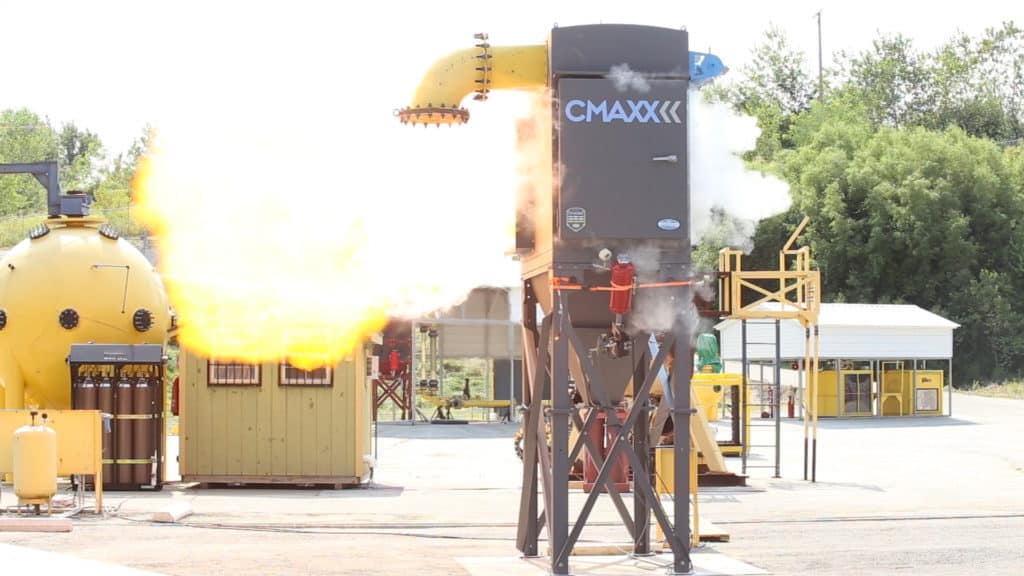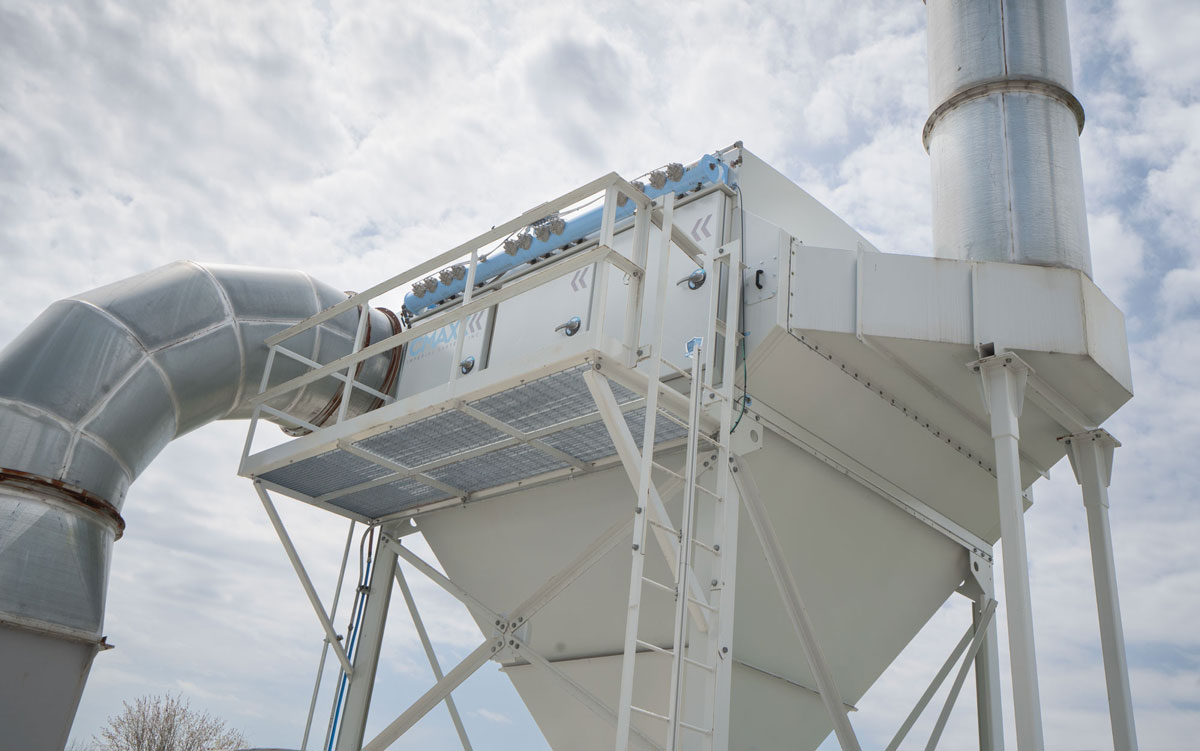An explosion inside a dust collector can be a disaster if there is no explosion venting (also called deflagration venting). Obviously, the first priority is to make sure that no sparks or heat sources have a chance to get inside the collector. However, even the best safety precautions aren’t 100% foolproof. If a dust explosion occurs in your dust collector, how will explosion relief be handled safely?
Explosion Venting Considerations
The method you choose for venting an explosion will be based on several factors:
- Location of the dust collector inside or outside the building
- Distance of the dust collector from roof or walls
- Proximity of the dust collector or vent to other structures
- Cost efficiency
Outside Installation
The first and safest method of venting a dust explosion is to have the collector located outside the building. In this case, any explosion that occurs will be vented safely with appropriate venting.
The issue with this method has to do with safety distance. Specifically, explosion relief vents must be located far enough away from anything that the energy vented might damage. Space around the dust collector, especially near the explosion vents, must be clear of anything that could be damaged or ignited.
Many areas have state and/or local regulations for fire safety and explosion venting. Locating the collector outside when possible is usually the easiest way to meet these standards.
Inside Installation
What if your dust collector must be inside the building? There are various reasons for this, depending on your system setup. For example, it’s possible that the collector must be centrally located. Also, it might need to be close to or attached to a certain piece of equipment.
 If you can’t put the collector outside, you will have to divert the energy of an explosion. The most common way to do that is to vent the explosion to the outside, either through a wall or through the ceiling. The area outside needs to be safe just like it would need to be around a dust collector, free of anything that could be damaged by the explosion. A deflector shield can redirect the explosive force in a safe direction.
If you can’t put the collector outside, you will have to divert the energy of an explosion. The most common way to do that is to vent the explosion to the outside, either through a wall or through the ceiling. The area outside needs to be safe just like it would need to be around a dust collector, free of anything that could be damaged by the explosion. A deflector shield can redirect the explosive force in a safe direction.
What happens if your dust collector is inside the building and you’re not close enough to a wall or ceiling to vent that way? This could be a very dangerous situation, with a collector inside your building and no way to get an explosion safely outside.
In this case, a flameless dust collector explosion vent may be the only safe option. While these safety devices are not cheap, they are essential for venting an explosion safely inside a facility or anywhere else that flame from the venting could be dangerous.
A flameless explosion vent design is made of a tightly wound metal mesh. It’s designed to extinguish the flame and dissipate the heat from an explosion. It takes up less space and is less expensive than other explosion protection systems. It is ATEX certified and NFPA 68 and 61 compliant.
Venting Solution Priorities
We recommend looking at explosion venting solutions in the following order, based on cost and safety:
- Locating the collector outside
- Venting the collector through a wall or ceiling
- Installing flameless venting
We also recommend always consulting your local building codes and regulations. Some areas have very specific regulations for fire safety and environmental safety.



